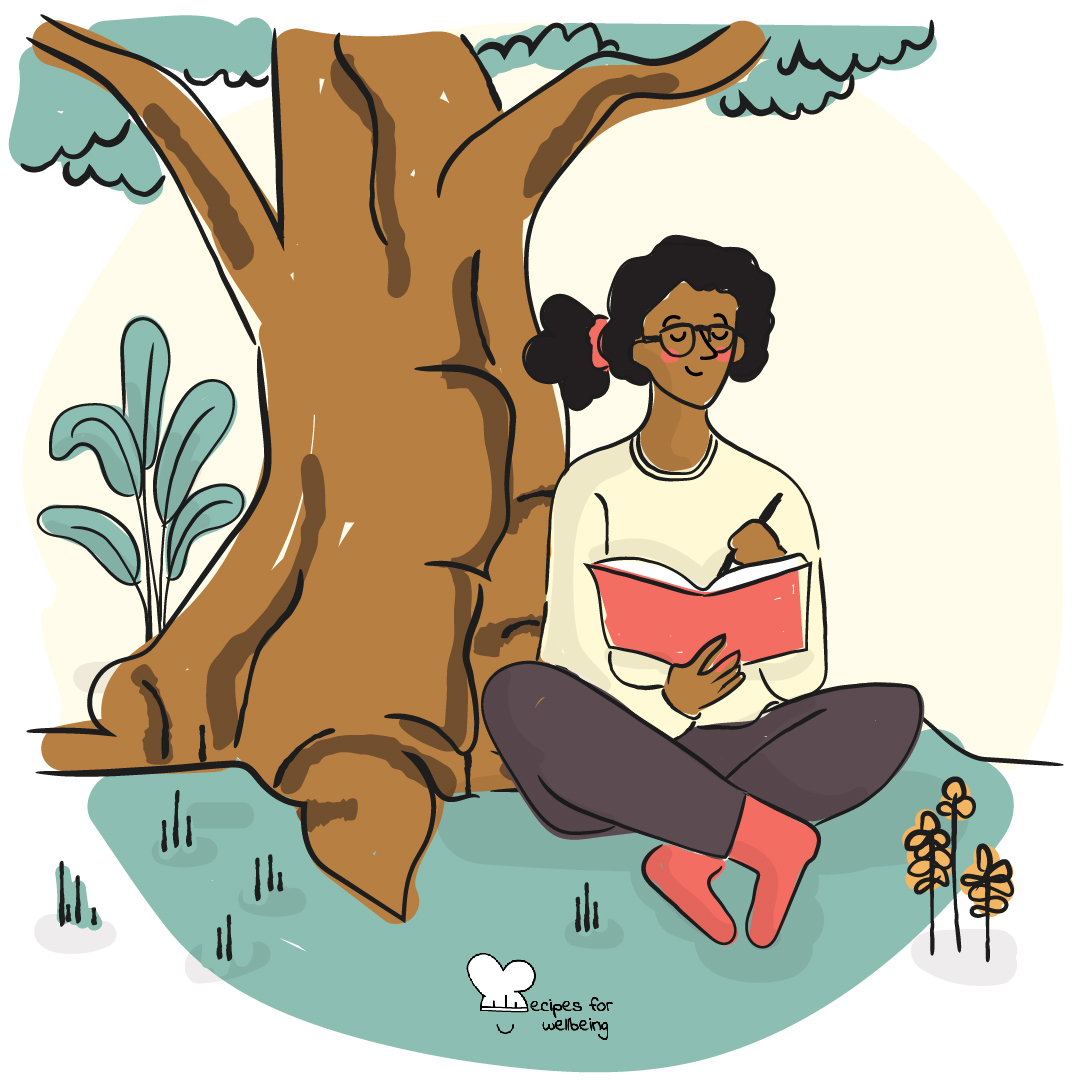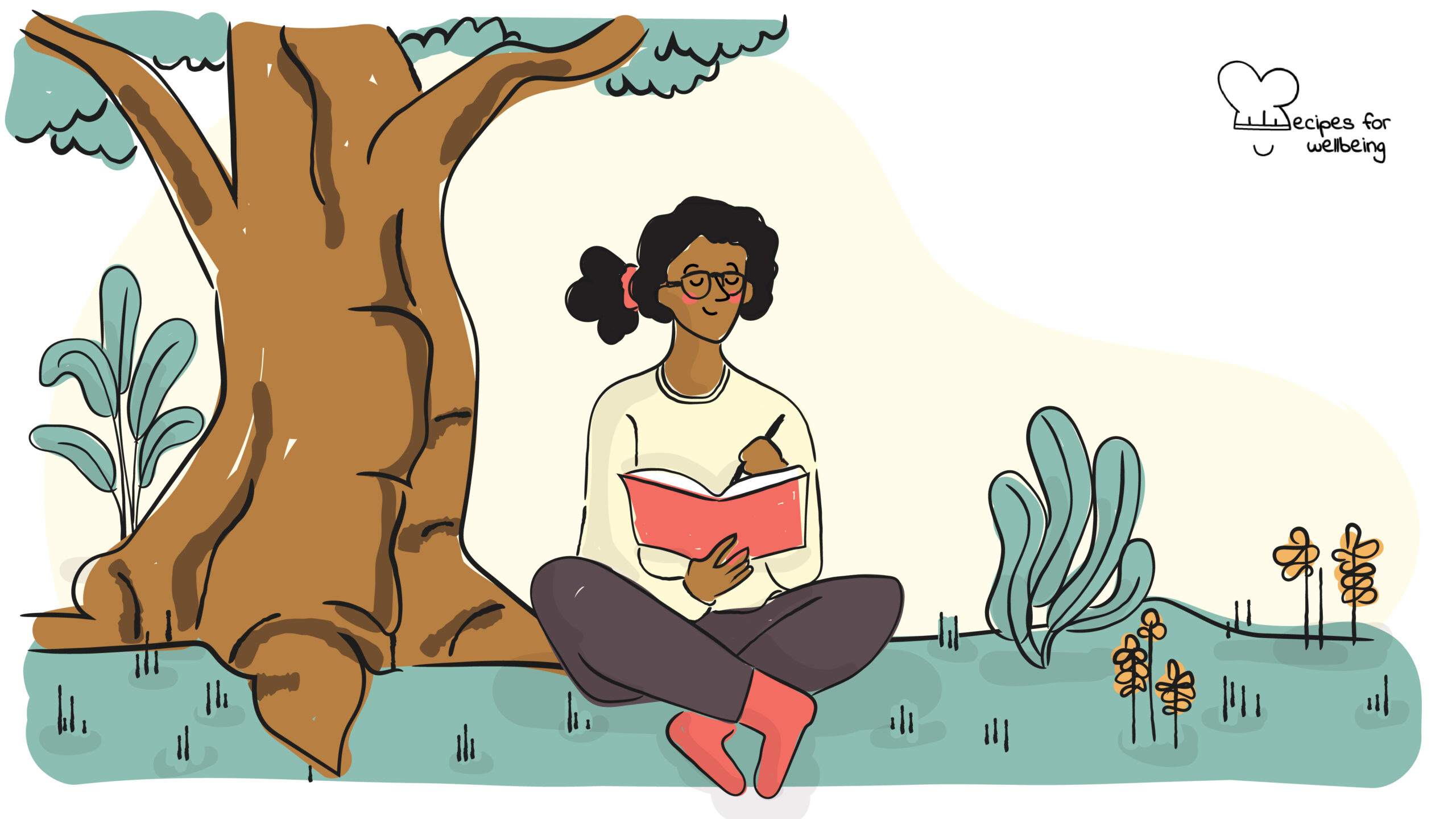
Dialogues with Nature
Look deep into nature, and then you will understand everything better. ―Albert Einstein
👥 Serves: 1 person, 11-25 people, 2-10 people
🎚 Difficulty: Hard
⏳ Total time: 61-120 minutes
🥣 Ingredients: Journals (1 per person – or a sheet of paper each), pens (1 per person), “Soulcraft” book by Bill Plotkin (if you’re curious to find out more about it!)
🤓 Wholebeing Domains: Bioempathy, Positive Emotion
💪 Wholebeing Skills: Abundance, Awe, Gratitude, Nature kinship, Nature sensitivity, Zest

Dialogues with Nature
📝 Description
Guidance for conversing with Nature.
It may seem odd, or maybe not at all, that most of us have become so mute and deaf in Nature, even when we work so hard to preserve and protect our natural environment in our jobs as changemakers. Depth psychologist, eco-therapist, and wilderness guide Dr Bill Plotkin mentions the contemporary eco-philosopher David Abram, who reminds us “that for the vast majority of humanity’s time on the planet (…), these conversations ‘across the species boundaries’ were a universal experience, part of our birthright as members of the more-than-human community.”
A core component in nurturing our wellbeing is to reclaim a more harmonious relationship with other-than-human species, with the rest of life on Earth. The following activity has been adapted from Dr Plotkin’s book Soulcraft: Crossing into the Mysteries of Nature and Psyche to offer you a step-by-step guide on how to rekindle your connection with Nature. This book is a powerful handbook for the transformative journey of your soul, and its nature-based approach gathers inspiration from the indigenous traditions, wilderness experience, as well as Western culture and cross-cultural heritage of all humanity.
•••
This recipe has been featured in our blog post “If you really listen, what does Nature tell you?” published on tbd* on 11 November 2020.
👣 Steps
Step 1 – Step outside
Go wandering outside, anywhere. Bring your journal. Be prepared to offer a gift – a poem, grief, yearning, joy, your eloquence, a song, a dance, a lock of hair, praise, tobacco, water.
Step 2 – Cross a threshold
Early on, cross over a physical threshold (such as a stream, stick, a large rock, a passageway between two trees) to mark your transition from ordinary time and space to the sacred. While on the sacred side, observe three cross-cultural taboos: do not eat, do not speak with other humans, and do not enter any human-made shelter.
Step 3 – Find the Other
Wander aimlessly until you feel called by something that draws your attention, by way of an attraction, a curiosity, an allurement, a repulsion, a fear. This might take some time. Don’t just choose something with your strategic thinking mind; wait until you are called. It may be a bush, a blade of grass, a stone, an anthill, a lizard, maybe a vulture or a rotting cow carcass. Maybe it will be a rainbow or a constellation of stars. Whatever it is, sit and observe it closely for a good length of time. Interact with your senses, offer your full visual and aural attention to the Other. Record in your journal what you observe. Perhaps offer a gift at this time.
Step 4 – Introduce yourself
Then introduce yourself, out loud – yes, out loud. (…) Be prepared to go on for an indefinite period of time, maybe a half hour or more. First tell it why you have been wandering around waiting to be called. (…) Tell the truth, your deepest, most intimate truth. In addition to ordinary human language, you might choose to speak with song, poetry, nonverbal sound, images, emotions, body language.
Step 5 – Describe the Other
Then, using the same speech options, tell that being everything about “it” you have noticed. Describe its features and, respectfully, tell it what interests you about those features and what it tells you about “you” that you find them interesting. Keep communicating no matter what… until it interrupts you.
Step 6 – Listen to the Other
Then stop and listen. Listen with your ears, eyes, nose, skin, intuition, feeling, and imagination (aural, visual, kinaesthetic, and so on).
Step 7 – Continue the conversation
Keep the conversation going several rounds. In your journal, record and/or draw what happens. Offer the Other your gratitude and a gift if you haven’t already.
Step 8 – Return
When you are ready, return to the place of your original threshold and cross back over.
Step 9 – Reflect
The Other might reflect something back to you about yourself, but, more generally, you’ll learn something about the Other. Or about both you and the Other. Or about the web that contains you both.

